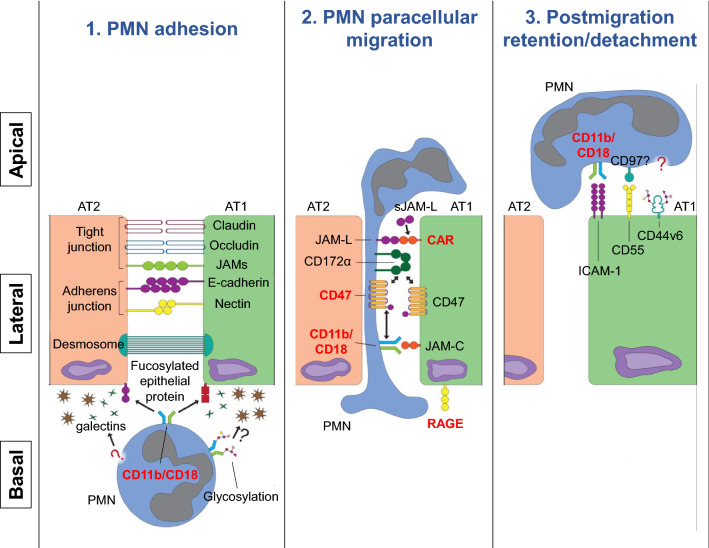Fig. 1.
Transpithelial migration of neutrophils into the airspace. The transepithelial passage of neutrophils (PMNs) from the pulmonary interstitium into the airspace involves the sequential steps of adhesion, paracellular migration, and post-migration adhesion/detachment, as illustrated. Initial adhesive events of PMNs with the basal aspect of epithelial cells may be regulated by PMN CD11b/CD18 interactions with fucosylated proteins and other poorly characterized molecules. Paracellular migration involves serial interactions of PMNs with epithelial junctional proteins, as shown. Finally, apical adhesion is thought to regulate PMN antimicrobial and migratory functions in the airspace and, potentially, to provide positive feedback signals that augment further PMN entry into the paracellular space. The degree to which specific epithelial adhesion proteins are presented by alveolar epithelial type 1 (AT1) vs. AT2 cells is unclear. As discussed in the text, the contribution of some of the adhesion molecules depicted to PMN transepithelial migration in the lung has been largely extrapolated from studies conducted in intestinal systems. Molecules shown in the red font have been confirmed to regulate PMN transepithelial migration in the lungs

